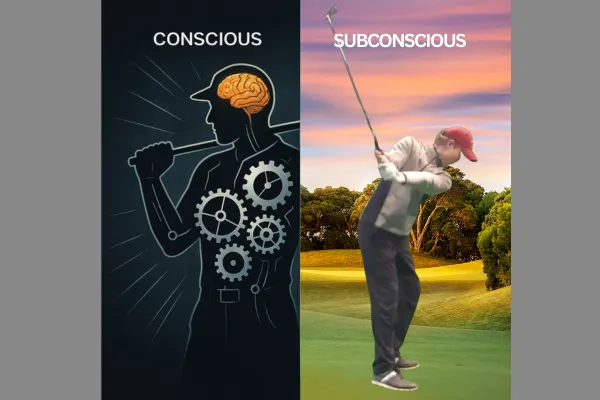
Conscious vs Subconscious: Mental Keys to Consistent Ball-Striking | SBG
Who Do You Put IN Charge? - Conscious vs Subconscious
When I stand on the lesson tee, I remind myself—and the player in front of me—that the swing they’re about to make is the product of thousands of motor commands already stitched together in long-term memory. Those commands live below the conscious waterline. The instant you, your partner, etc., ask the golfer to seize control of each microscopic movement with the analytical mind, we interrupt the very system that makes coordinated motion possible.
Hi friends and golfers. My name is coach Erik Schjolberg, founder and owner of EJS Golf and the Science of Better Golf community. You can find me teaching live at McCormick Ranch golf course located in Scottsdale, AZ. Having coached thousands of lessons over the past 25 years plus, I have learned that the more golfers focus on data and what is real vs. feels or imagined, the better they get.

Motor-learning research is unambiguous on this point. Fitts and Posner’s classic three-stage model shows that once a skill has migrated from the cognitive into the autonomous stage, re-routing it back through conscious monitoring slows processing speed and introduces variability. Gabriele Wulf’s attentional-focus studies echo the same principle: internal, mechanics-oriented cues inflate muscular co-contraction, robbing the swing of tempo and fluidity, whereas external cues allow the subconscious to run its well-grooved program. And Sian Beilock’s work on “explicit monitoring” explains why elite athletes crumble under pressure when they start overthinking limbs and positions that normally run on autopilot.
As coaches, it is seductive to prescribe ever-more detailed motion commands—especially when we have 3-D data at our fingertips—but past a certain bandwidth those instructions create cognitive overload. My rule: use conscious thought to set the stage (pre-shot routine, external focus, ball-flight intention), then relinquish the reins. That doesn’t mean we abandon technique work; it means we build technique in practice, package it into robust motor patterns, and trust the subconscious to deploy it on command.
If you truly want to strike the ball better under the gun, we must learn to think less about elbows and more about targets. Train consciously, perform subconsciously—that is the science of better golf. Check out my YouTube page for drill videos and read more of my blogs.
What do you think about before you swing? Please comment below with your take.
Checkout my golf community, The Science of Better Golf.
(480) 861-9370
